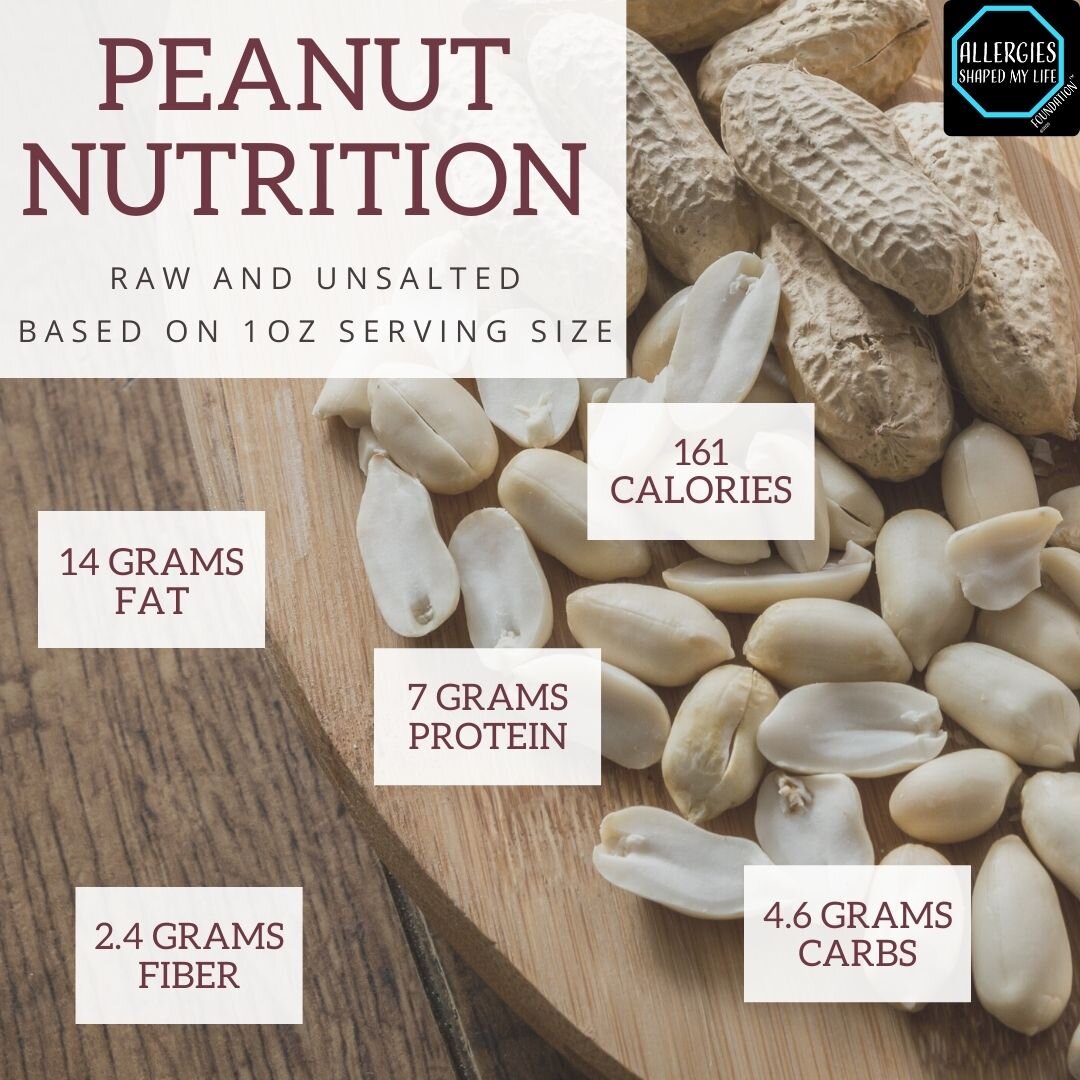Lets talk Peanuts
A food allergy reaction happens when an immune response occurs, and your body reacts as if the food item is an invader or a harmful substance. An allergic reaction can be mild or severe and symptoms can occur within minutes or up to hours later. Examples of symptoms can be hives, rash, coughing, difficulty breathing, swelling of face, tongue, or lips, flushed skin, etc. The onset of food allergies can occur at any age.
The Food Allergen Labeling and Consumer Protection Act (FALCPA), requires manufactures to label their ingredients and inform the consumer of any top allergens, including peanuts. If you have a known peanut allergy it is especially important to read the ingredient lists carefully every time you eat a product. Carrying your prescribed medications with you, such as an EpiPen is important to help assist you during an allergic reaction. Always communicate and educate with those around you to help make them aware of your peanut allergy.
With the FALCPA in place, it creates more comfort and security for those who have food allergies. Even with the regulation, it is still important to know what foods could contain peanuts to make sure you are educated about your allergen. Now we are not going to go through every single possibility but will include quite a few to help assist. Foods that you will want to avoid if you have a peanut allergy include: Peanut oil (also known as arachis oil or groundnut oil), peanut butter, peanut flour, peanut protein hydrolysate, etc. More investigation will be necessary by reading the ingredient lists for items such as mixed nuts, candy, ice cream, baked goods, soups, glazes or sauces/marinades, ethnic dishes, vegetarian products, etc. Continue to watch and reduce any possibilities of cross contact, to review cross contact click here.
What makes peanuts different?
“Peanut seedlings rise out of the soil about 10 days after planting. They grow into a green oval-leafed plant about 18 inches tall.” (How Peanuts Grow | National Peanut Board, 2021). As you may have guessed, the flowers form above ground while the peanuts grow below the ground in the soil. “The plant continues to grow and flower, eventually producing some 40 or more pods. From planting to harvesting, the growing cycle of a peanut takes four to five months, depending on the type and variety.” (How Peanuts Grow | National Peanut Board, 2021).
Nutrition information collected from USDA (FoodData Central, 2020).
As long as you don’t have a known allergy to tree nuts, you can eat tree nuts since peanuts are in the category of legumes. As always, please consult your medical team to confirm what is safe to consume based on your individual food allergies. Be aware that during certain manufacturing processes or eating situations there could be cross contact of peanuts.
Here are a few examples of common alternatives for peanuts with their nutritional information.
Substitutes for peanut butter can be butters from tree nuts (such as almond or cashew), seeds (such as sunflowers), granola butter, and more. Enjoy trying a variety of peanut butter alternatives to find your favorite!
Nutrition information collected from USDA (FoodData Central, 2020).
When it comes to having food allergies, whether it is one or many, always focus on what you can eat and not what you can’t. Having this mentality will allow you to enjoy so many delicious food products!
References:
Center for Food Safety and Applied Nutrition. (2018, September 20). Guidance for Industry: Questions and Answers Regarding Food Allergens (Edition 4). U.S. Food and Drug Administration. https://www.fda.gov/regulatory-information/search-fda-guidance-documents/guidance-industry-questions-and-answers-regarding-food-allergens-edition-4
FoodData Central. (2020). USDA. https://fdc.nal.usda.gov/index.html
How Peanuts Grow | National Peanut Board. (2021). How Peanuts Grow. https://www.nationalpeanutboard.org/peanut-info/how-peanuts-grow.htm
MyFitnessPal | MyFitnessPal.com. (2021). MyFitnessPal. https://www.myfitnesspal.com
Today’s Dietitian. (2013). Today’s Dietitian. https://www.todaysdietitian.com/pdf/webinars/ProteinContentofFoods


